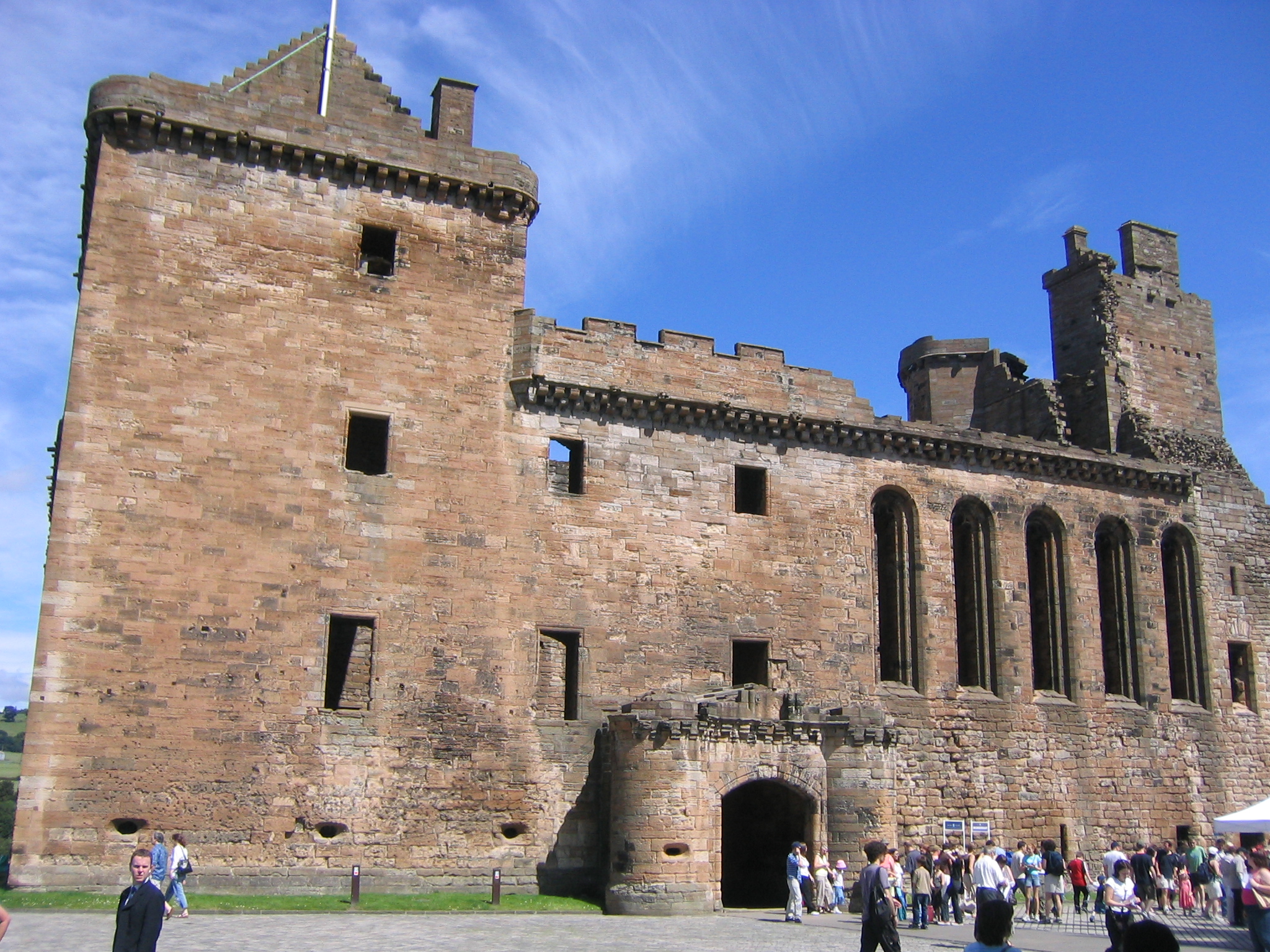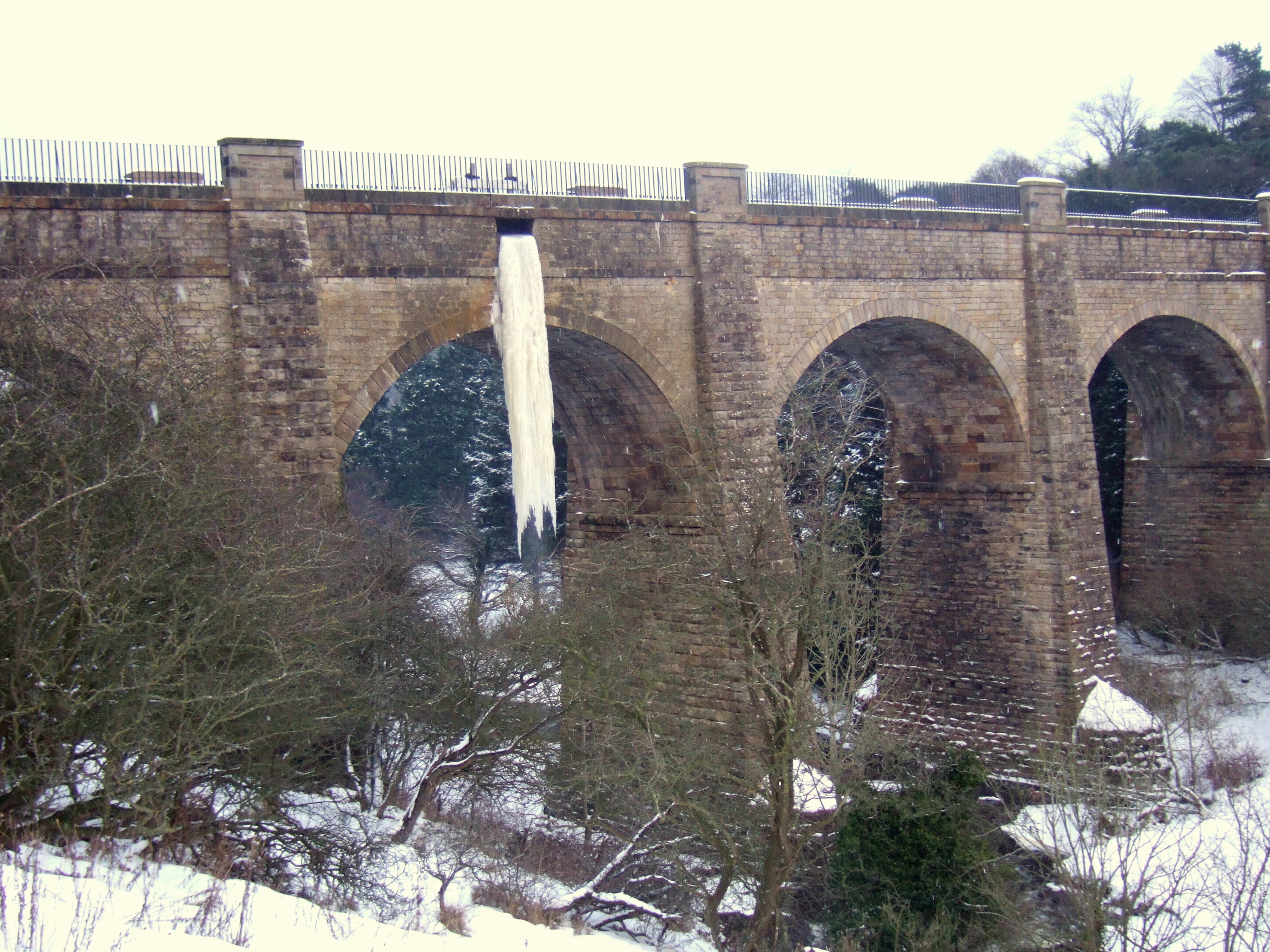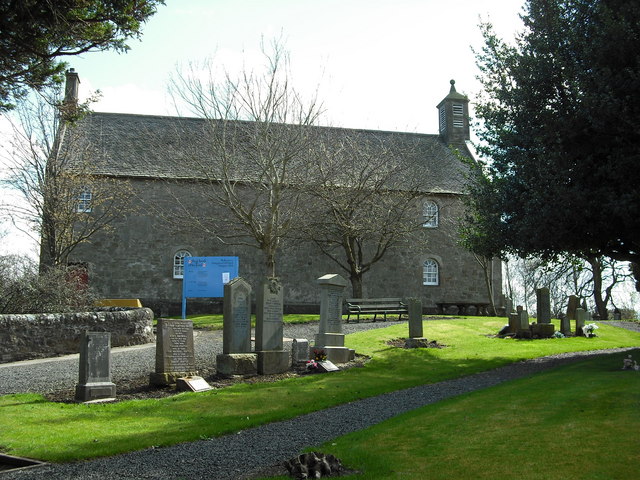|
Linlithgow
Linlithgow (; gd, Gleann Iucha, sco, Lithgae) is a town in West Lothian, Scotland. It was historically West Lothian's county town, reflected in the county's historical name of Linlithgowshire. An ancient town, it lies in the Central Belt on an historic route between Edinburgh and Falkirk beside Linlithgow Loch. The town is situated approximately 20 miles (32 km) west of Edinburgh. During the medieval period, the town grew in prominence as a royal burgh and residence around Linlithgow Palace. In later centuries, Linlithgow became a centre of industry in leather making and other materials, before developing rapidly in the Victorian era with the opening of the Union Canal in the 1820s and the arrival of the railway in 1842. Linlithgow was the former county town of the county but the Council now resides in nearby Livingston. Today Linlithgow has less industry and the economy of the town centre is focused on hospitality, heritage and tourism services. Linlithgow's patron saint is S ... [...More Info...] [...Related Items...] OR: [Wikipedia] [Google] [Baidu] |
Linlithgow Palace
The ruins of Linlithgow Palace are located in the town of Linlithgow, West Lothian, Scotland, west of Edinburgh. The palace was one of the principal residences of the monarchs of Kingdom of Scotland, Scotland in the 15th and 16th centuries. Although maintained after Scotland's monarchs left for England in 1603, the palace was little used, and was burned out in 1746. It is now a visitor attraction in the care of Historic Environment Scotland. Origins A royal manor existed on the site from the 12th century. This was enclosed by a timber palisade and outer fosse to create a fortification known as 'the Peel', built in 1301/2 by occupying English forces under Edward I of England, Edward I to designs by James of Saint George. The site of the manor made it an ideal military base for securing the supply routes between Edinburgh Castle and Stirling Castle. The English fort was begun in March 1302 under the supervision of two priests, Richard de Wynepol and Henry de Graundesto ... [...More Info...] [...Related Items...] OR: [Wikipedia] [Google] [Baidu] |
West Lothian
West Lothian ( sco, Wast Lowden; gd, Lodainn an Iar) is one of the 32 council areas of Scotland, and was one of its historic counties. The county was called Linlithgowshire until 1925. The historic county was bounded geographically by the Avon to the west and the Almond to the east. The modern council area occupies a larger area than the historic county. It was reshaped following local government reforms in 1975: some areas in the west were transferred to Falkirk; some areas in the east were transferred to Edinburgh; and some areas that had formerly been part of in Midlothian were added to West Lothian. West Lothian lies on the southern shore of the Firth of Forth and is predominantly rural, though there were extensive coal, iron, and shale oil mining operations in the 19th and 20th centuries. These created distinctive red-spoil heaps (locally known as " bings") throughout the council area. The old county town was the royal burgh of Linlithgow, but the largest town (and the ... [...More Info...] [...Related Items...] OR: [Wikipedia] [Google] [Baidu] |
Linlithgow (Scottish Parliament Constituency)
Linlithgow is a constituency of the Scottish Parliament ( Holyrood) covering part of the council area of West Lothian. It elects one Member of the Scottish Parliament (MSP) by the plurality (first past the post) method of election. It is also one of nine constituencies in the Lothian electoral region, which elects seven additional members, in addition to the nine constituency MSPs, to produce a form of proportional representation for the region as a whole. The seat has been held by Fiona Hyslop of the Scottish National Party since the 2011 Scottish Parliament election. Electoral region The other eight constituencies of the Lothian region are Almond Valley, Edinburgh Central, Edinburgh Eastern, Edinburgh Northern and Leith, Edinburgh Pentlands, Edinburgh Southern, Edinburgh Western and Midlothian North and Musselburgh The region includes all of the City of Edinburgh council area, parts of the East Lothian council area, parts of the Midlothian council area and a ... [...More Info...] [...Related Items...] OR: [Wikipedia] [Google] [Baidu] |
Linlithgow Burgh Halls
Linlithgow Burgh Halls is a municipal structure at The Cross, Linlithgow, Scotland. The complex includes the Town House, the former headquarters of Linlithgow Burgh Council, which is a Category A listed building. and the Old County Hall, the former headquarters of West Lothian County Council, which is a Category B listed building. History The first municipal building in the town was a medieval tolbooth with a large bell tower: it was demolished on the orders of the Lord Protector, Oliver Cromwell, to provide improved access to Linlithgow Palace, in 1650. Following the Stuart Restoration, burgh leaders decided to commission a new town house: the new building was designed by John Smith in the neoclassical style, built by Robert Mylne in ashlar stone and was completed in late 1670. The design involved a symmetrical main frontage with seven bays facing onto The Cross; the central bay featured a square headed doorway on the first floor which was originally accessed by a single f ... [...More Info...] [...Related Items...] OR: [Wikipedia] [Google] [Baidu] |
Linlithgow Loch
Linlithgow Loch lies immediately north of the town of Linlithgow in West Lothian, Scotland. 1.3 kilometres in length and 0.4 in breadth, its area of 41 hectares makes it the largest natural freshwater loch in Lothian. It is, however, shallow, with a mean depth of 2.3 metres and a maximum depth of 9.2 metres. The loch is fed by four small streams, the Hatchery Burn, the Bonnytoun Burn, the Springfield Burn, and Bell's Burn,"Linlithgow Loch and its wildlife" West Lothian Council. NB: the Hatchery Burn is shown unlabelled in the top right corner of the map. and drained by the Mill Burn on its western side, which eventually joins the Avon. The loch is t ... [...More Info...] [...Related Items...] OR: [Wikipedia] [Google] [Baidu] |
Linlithgow And East Falkirk (UK Parliament Constituency)
Linlithgow and East Falkirk is a county constituency of the House of Commons of the Parliament of the United Kingdom, created for use in the 2005 general election. It replaced most of Falkirk East and Linlithgow. The constituency covers the eastern portion of the Falkirk council area and the western portion of the West Lothian council area. Boundaries The constituency was formed for the 2005 United Kingdom general election. It comprises communities from West Lothian and Falkirk council areas. These comprise Armadale, Avonbridge, Bathgate, Blackness, Blackridge, Boghall, Bo'ness, California, Grangemouth, Greenrigg, Linlithgow, Maddiston, Philpstoun, Reddingmuirhead, Rumford, Slamannan, Torphichen, Wallacestone Wallacestone is a village in the area of Falkirk, central Scotland. It lies south-west of Polmont, south-east of Falkirk and north-east of California. The population of Wallacestone was recorded as 746 residents at the time of the 2001 cen ..., Westfie ... [...More Info...] [...Related Items...] OR: [Wikipedia] [Google] [Baidu] |
Linlithgow (ward)
Linlithgow is one of the nine wards used to elect members of the West Lothian Council. It elects four Councillors. In 2019, the population of the ward was 16,499. Councillors Election Results 2022 Election 2022 West Lothian Council election 2017 Election 2017 West Lothian Council election 2012 Election 2012 West Lothian Council election 2007 Election 2007 West Lothian Council election Elections to West Lothian Council were held on 3 May 2007, the same day as the other Scottish local government elections and the Scottish Parliament general election. The election was the first one using nine new wards created as a result of ... References {{Wards of West Lotian Wards of West Lothian Linlithgow ... [...More Info...] [...Related Items...] OR: [Wikipedia] [Google] [Baidu] |
Union Canal (Scotland)
The Union Canal, full name the Edinburgh and Glasgow Union Canal, is a canal in Scotland, running from Falkirk to Edinburgh, constructed to bring minerals, especially coal, to the capital. It was opened in 1822 and was initially successful, but the construction of railways, particularly the Edinburgh and Glasgow Railway, which opened in 1842, diminished its value as a transport medium. It fell into slow commercial decline and was closed to commercial traffic in 1933. It was officially closed in 1965. The canal is listed as three individual scheduled monuments by Historic Scotland according to the three former counties, Midlothian, West Lothian and Stirlingshire, through which it flows. It has benefited from a general revival of interest in canals and, as a result of the Millennium Link, was reopened in 2001 and reconnected to the Forth and Clyde Canal in 2002 by the Falkirk Wheel. It is now in popular use for leisure purposes. History Proposal The canal was conceived with ... [...More Info...] [...Related Items...] OR: [Wikipedia] [Google] [Baidu] |
James I Of Scotland
James I (late July 139421 February 1437) was King of Scots from 1406 until his assassination in 1437. The youngest of three sons, he was born in Dunfermline Abbey to King Robert III and Annabella Drummond. His older brother David, Duke of Rothesay, died under suspicious circumstances during detention by their uncle, Robert, Duke of Albany. James' other brother, Robert, died young. Fears surrounding James's safety grew through the winter of 1405/6 and plans were made to send him to France. In February 1406, James was forced to take refuge in the castle of the Bass Rock in the Firth of Forth after his escort was attacked by supporters of Archibald, 4th Earl of Douglas. He remained at the castle until mid-March, when he boarded a vessel bound for France. On 22nd March, English pirates captured the ship and delivered the prince to Henry IV of England. The ailing Robert III died on 4 April and the 11-year-old James, now the uncrowned King of Scots, would not regain his freed ... [...More Info...] [...Related Items...] OR: [Wikipedia] [Google] [Baidu] |
Livingston, West Lothian
Livingston ( sco, Leivinstoun, gd, Baile Dhunlèibhe) is the largest town in West Lothian, Scotland. Designated in 1962, it is the fourth post-war new town to be built in Scotland. Taking its name from a village of the same name incorporated into the new town, it was originally developed in the then-counties of Midlothian and West Lothian along the banks of the River Almond. It is situated approximately fifteen miles (25 km) west of Edinburgh and thirty miles (50 km) east of Glasgow, and is close to the towns of Broxburn to the north-east and Bathgate to the north-west. The town was built around a collection of small villages, Livingston Village, Bellsquarry, and Livingston Station (now part of Deans). The town has a number of residential areas. These include Craigshill, Howden, Ladywell, Knightsridge, Deans, Dedridge, Murieston, Almondvale, Eliburn, Kirkton, and Adambrae. There are several large industrial estates in Livingston, including Houston indust ... [...More Info...] [...Related Items...] OR: [Wikipedia] [Google] [Baidu] |
Lithgow (surname)
Lithgow is a surname originating from Scottish as a habitational name from Linlithgow, between Edinburgh and Falkirk, which was probably named with British words related to modern Welsh '' llyn'' ‘lake’, ‘pool’ + ''llaith'' ‘damp’ + ''cau'' ‘hollow’. In the 13th and 14th centuries the name appears both with and without the first syllable. Originally, Lithgow was the name of the settlement and Linlithgow that of the lake. Lithgow was associated by folk etymology with Gaelic ''liath'' ‘gray’ + ''cu'' ‘dog’, and such a figure appears on the medieval borough seal. The surname, is well represented in the Dominican Republic, South Africa, Australia, New Zealand, the United States, and the UK. It may refer to: People * Alan Lithgow (born 1988), Scottish football player *Alex Lithgow (1870–1929), composer (marches)/musician/conductor, a Tasmanian Australian, formerly of Invercargill, New Zealand * Arthur Lithgow (1915–2004), American-Dominican film directo ... [...More Info...] [...Related Items...] OR: [Wikipedia] [Google] [Baidu] |
List Of Scottish Monarchs
The monarch of Scotland was the head of state of the Kingdom of Scotland. According to tradition, the first King of Scots was Kenneth I MacAlpin (), who founded the state in 843. Historically, the Kingdom of Scotland is thought to have grown out of an earlier "Kingdom of the Picts" (and later the Kingdom of Strathclyde that was conquered in the 11th century, becoming part of the new Kingdom of Scotland) though in reality the distinction is a product of later medieval myth and confusion from a change in nomenclature i.e. ('King of the Picts') becomes (King of Alba) under Donald II when annals switched from Latin to vernacular around the end of the 9th century, by which time the word in Scottish Gaelic had come to refer to the Kingdom of the Picts rather than Britain (its older meaning). The Kingdom of the Picts just became known as the Kingdom of Alba in Scottish Gaelic, which later became known in Scots and English as ''Scotland''; the terms are retained in both langua ... [...More Info...] [...Related Items...] OR: [Wikipedia] [Google] [Baidu] |


.png)
.jpg)



